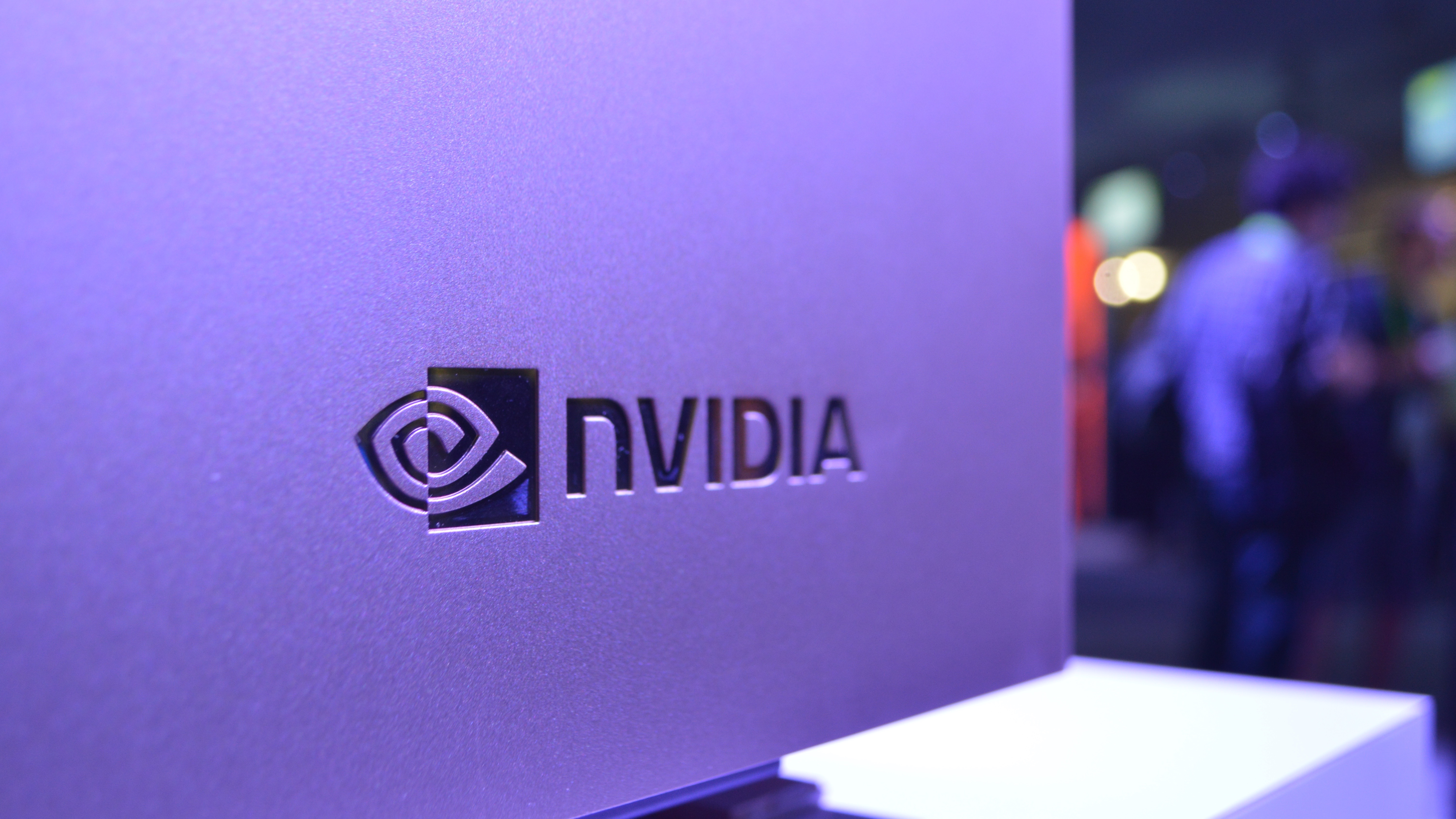
In a year where we saw new components release every month, Nvidia remained relatively relaxed with new Pascal releases throughout the year. That’s not to say the company did nothing at all, after all the year included some big releases, including the Nividia GTX 1080 Ti, Nvidia GTX 1070 Ti, Nvidia Titan Xp, Max-Q laptops and playing its part in the Nintendo Switch launch.
But more than anything else though, this year felt like the calm before the storm for Nvidia.
In this article, we’ll tally all of Nvidia’s achievements and mistakes in 2017 to deliver a report card on how the chip maker performed this year. We’ll also do a little prediction as to what and how Nvidia will do in the coming year.
Neural networking

No CES would be complete without Nvidia talking about artificial intelligence, and the company delivered exactly that at the beginning of the year. Team green also announced a new Google Assistant-powered Shield set top box. Whether you wanted to start playing Stranger Things or order a pizza, you could now do it all just by shouting from your couch.
We also got our usual dose of Nvidia expanding and improving its AI platform for driverless cars and other fields at CES. While this might seem like a side project for the graphics card maker, Nvidia makes its bread-and-butter on AI. With multi-billion dollar contracts, it’s how the company gets around making only a few new GPUs this year.
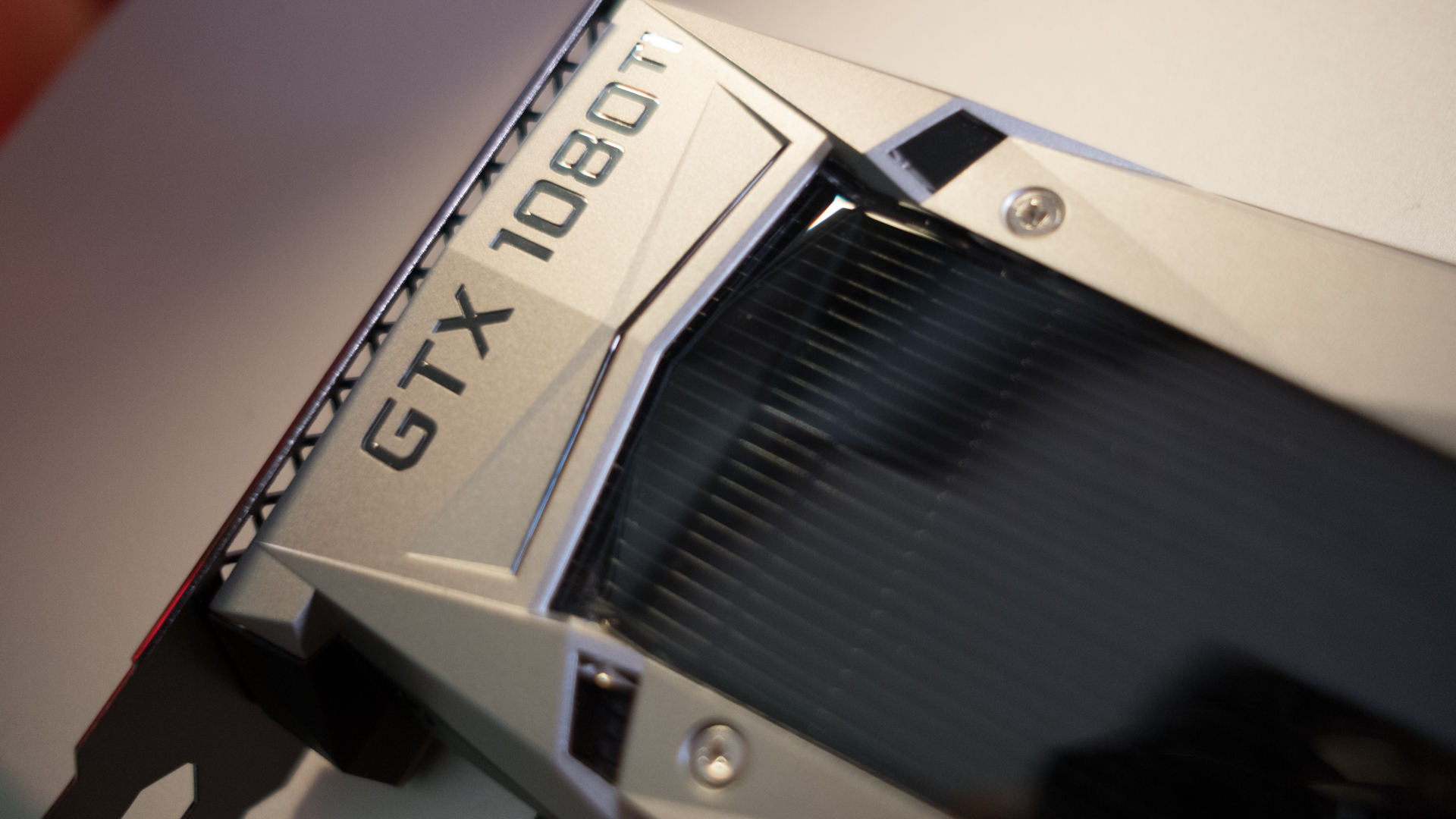
Kingslayer
Following the announcement of the Nvidia GTX 1080, 1070 and 1060 in 2016, it was almost certain we would see an Nvidia GTX 1080 Ti release early into 2017 and that's exactly what happened on March 1st. While that was all expected, we didn't anticipate that the company's flagship consumer graphics card would complete run over the Nvidia Titan X.
The graphics card literally turned the dial to 11 with 12-billion transistors and 3,584 CUDA, 11GB of GDDR5X RAM operating 11Gbps. At this point in time the Pascal GPUs' – including the Nvidia GTX Titan X – memory clocks only went as high as 10Gbps.
Get daily insight, inspiration and deals in your inbox
Sign up for breaking news, reviews, opinion, top tech deals, and more.
Nvidia’s highest-end gamer-focused GPU was so fast that it could even be overclocked to 2GHz and had a boosted frequency of 1.6GHz. That made it a hair quicker than even the Nvidia Titan X that normally operated at 1.5GHz.

Switching into consoles
You might not have known this, but Nvidia makes the graphics processor that powers the Nintendo Switch. Considering that the Switch is already on track for more than 10 million sales since launching earlier this March, we would have to say it has been a roaring success.
The Nintendo Switch is one of the best hybrid consoles to ever release with the ability to quickly unplug from your TV and go into portable mode without having to turn off completely or any funky graphical glitches. With AMD graphics found inside the other two major game consoles, it's a huge win for Nvidia in a space where it’s outnumbered.

Driver drama
No discussion about Nvidia’s performance this year would be complete without looking at its delivery of graphics card drivers. While the company released a steady stream of game-ready software just before the release of marquee games throughout the year, an update in March literally burned some graphics cards out.
Specifically, version 364.47 of Nvidia’s GeForce graphics drivers caused a range of bugs including game freezes, visual glitches and even caused GPUs to overheat. While Nvidia promptly pulled the driver update, the damage couldn’t be undone for some users.
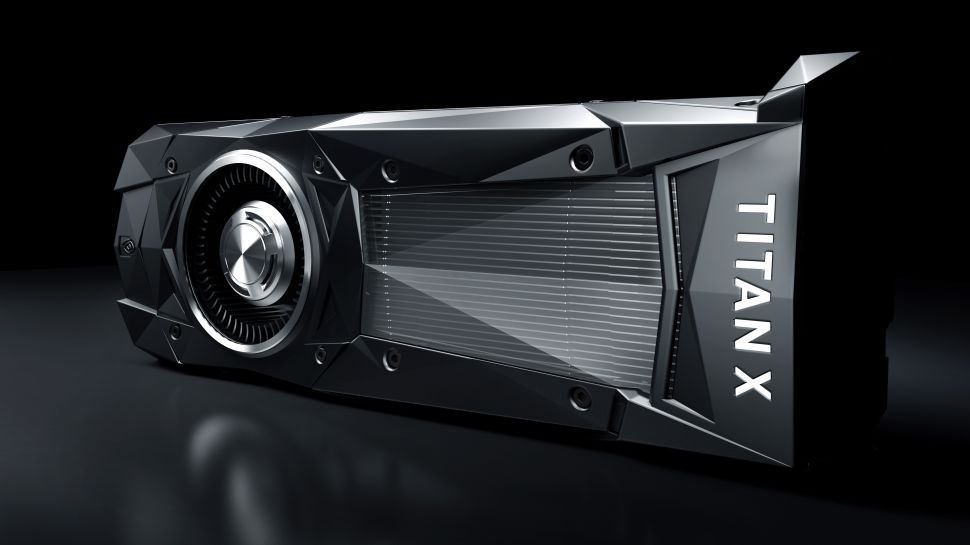
The new king
Only a month after the Nvidia GTX 1080 Ti usurped the Titan X as the ruling GPU king, Team Green announced a new Nvidia Titan Xp to reclaim the throne in April 2017. As such this GPU featured more of everything with 3,840 CUDA cores running at 1.6GHz and 12GB of GDDR5X memory running at 11.4Gbps. Altogether this impressive graphics card delivered an overwhelming 12 teraflops of graphical performance.

Taking mobile graphics to the moon
Although Nvidia didn't announce any "brand new" graphics cards for laptops, the company introduced a big initiative called Max-Q to introduce the best mobile GPUs to thinner laptops.
Nvidia made a huge promise to deliver a new generation of gaming laptops that were three times thinner and three times faster than currant laptops. All of these Ultrathin laptops would feature Nvidia GTX 1060, 1070 and even 1080 GPUs that were normally reserved for thick desktop replacements. All the while, these laptops would remain whisper quiet and relatively cool even during intense gaming sessions.
The result was an impressive lineup of thin-and-light laptops including the Asus ROG Zephyrus GX501, Acer Predator Triton 700, MSI GS63VR Stealth Pro and the Dell Inspiron 15 7000 Gaming – just to name a few of the Max-Q highlights.
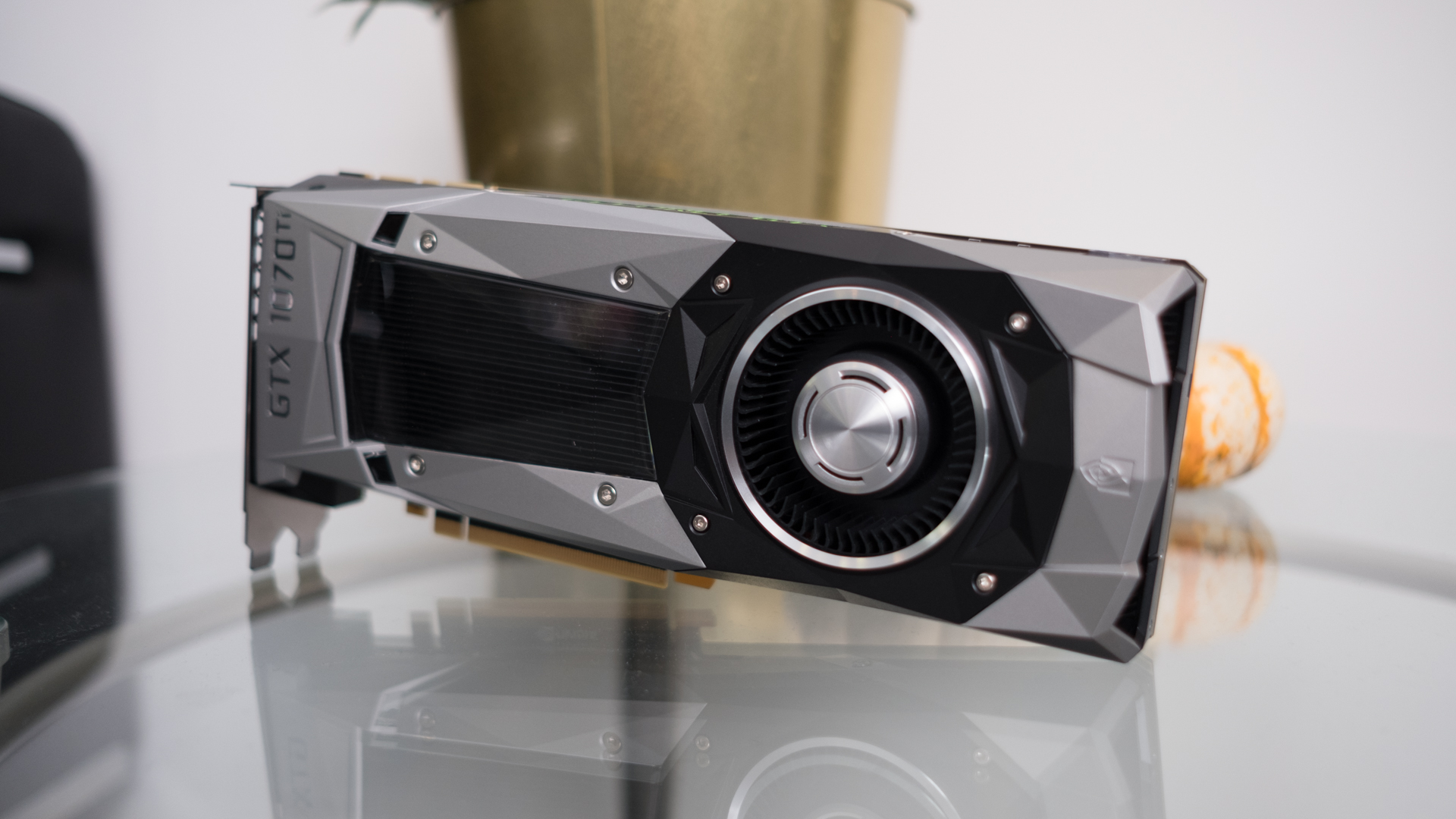
Nvidia GTX 1070 Ti shifts the market
Though the Nvidia GTX 1070 Ti could be seen as a reactionary move to the AMD Radeon Vega 56, it was no less a pleasant surprise. After testing it, the GTX 1070 Ti also proved to be one of our favorite GPUs of the year. It offered great graphical performance nearly on par with the Nvidia GTX 1080 at just a slight price premium from the GTX 1070.
However, not everything was perfect with the GPU’s release. For one thing, unlike the previous Founders Edition cards Nvidia introduced, the company’s version of the GTX 1070 Ti debuted to set the market price for all other versions. In the past Founders Editions were always set above the MSRP as a premium version, but this time Nvidia effectively laid down a price floor for all 1070 Ti variants.
What’s worse is Nvidia prevented its partners from factory overclocking the 1070 Ti GPUs, leaving companies like MSI and Asus to find loopholes around the restrictions with utility applications. All-in-all, the GTX 1070 Ti was a great card, but Nvidia’s business practices around its release were not, and we for one are hoping they won’t continue into the new year.
Jedi vs Empire
Just a few weeks after the announcement of the Nvidia GTX 1070 Ti, we were surprised again with the sudden announcement of a Star Wars Edition re-release of the Nvidia Titan X. Sure it didn’t improve on the specs or performance of the card, but it was a really nice tie-in for The Last Jedi film.
Not only did the re-release come with new lighting elements and a redesigned faring, both the Empire and Jedi versions of the cards were gorgeous and unique in their own way.
High Volta-ge
Last, but not least, was the new Nvidia Titan V, which the company released calling it the most powerful GPU in the world. It was hard to argue with the claim, considering this single card features an absurd 110 teraflops of performance from its 21.1 billion transistors, 5,120 CUDA cores and 640 tensor cores.
Though this graphics card was entirely designed for deep learning applications, it foreshadows what we can possibly expect with Volta – which is likely to debut in 2018. The Nvidia Titan V was the first Nvidia GPU to feature HBM2 memory and the company’s smallest 12nm architecture yet.
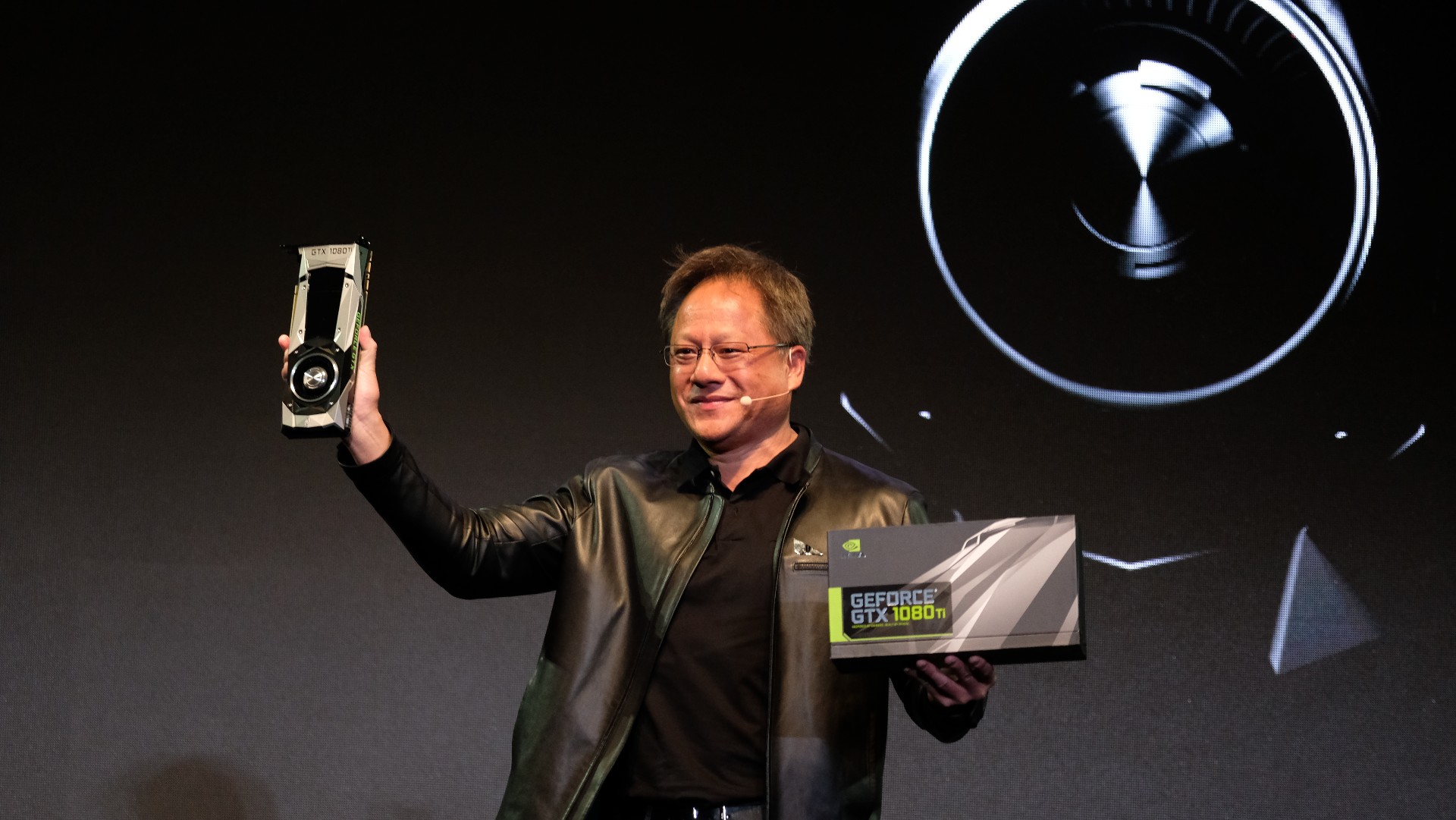
What does 2018 have in store for Nvidia?
While we only saw a single glimpse of what Volta can do this year, we fully expect it to take the world by storm in the coming months. We predict 2018 will hold new, highly-competitive graphics solutions from both Intel and AMD, so Nvidia will have to amaze us again to retain its undisputed position in the GPU world.
In the same breath, Intel with AMD Vega graphics could steal some of Nvidia’s thunder in the notebooks space. The MX150 and Nvidia 940MX are still the prevailing mobile GPUs you’ll find in most budget multimedia notebooks – outside those in gaming at least – and they’re underwhelming in our book. It could be time for Nvidia to either launch a new line for notebooks or integrate the 1050 (Ti) and 1060 Max-Q into more thin-and-light (and affordable) designs.
Nvidia GeForce Experience is beginning to feel long-in-the-tooth since its last major update and lags behind AMD’s Radeon Software Adrenalin Software in some ways. We suspect it’s long overdue for a refresh and some new features as well.
Kevin Lee was a former computing reporter at TechRadar. Kevin is now the SEO Updates Editor at IGN based in New York. He handles all of the best of tech buying guides while also dipping his hand in the entertainment and games evergreen content. Kevin has over eight years of experience in the tech and games publications with previous bylines at Polygon, PC World, and more. Outside of work, Kevin is major movie buff of cult and bad films. He also regularly plays flight & space sim and racing games. IRL he's a fan of archery, axe throwing, and board games.
